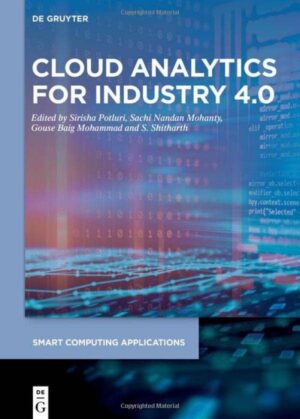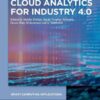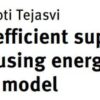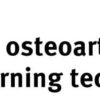کتاب Cloud Analytics for Industry 4.0 (تحلیل ابری برای صنعت 4) حاصل نوشتهی چندین متخصص حوزهی رایانش ابری در زمینهی محاسبات ابری و کاربردهای آن است. این کتاب در چندین بخش متنوع به شرح کاربرد رایانش ابری در زمینههای مختلف خواهد پرداخت.
در ادامه مقدمهای از کتاب Cloud Analytics for Industry 4.0 را شرح خواهیم داد.
مقدمهای بر کتاب Cloud Analytics for Industry 4.0:
مجموعه کتاب «کاربردهای محاسبات هوشمند» بستری را برای محققان، دانشگاهیان و متخصصان فراهم میکند تا در مورد تحقیقات اخیر علم دادههای نظری و کاربردی و فناوریهای محاسباتی با توجه ویژه به کاربردهای احتمالی چنین فناوریهایی در صنعت، به ویژه در رشته مهندسی مکانیک و صنایع تبادل نظر کنند.
این مجموعه به عنوان یک منبع ارزشمند برای دانشجویان فارغ التحصیل، کارشناسی ارشد، دکترا، محققان، دانشگاهیان و متخصصان صنعت عمل میکند.
سرفصلهای کتاب Cloud Analytics for Industry 4.0:
- List of authors
- G. Sucharitha, I. Venkata Sai Suhruth, Bitla Vishweshwar, Sirisha Potluri The impact of green manufacturing in Industry 4.0 for future ecosystems
- 1 Introduction
- 2 Review
- 2.1 Literature
- 2.2 Background and framework
- 3 Manufacturing ecosystem
- 3.1 Sustainability
- 3.2 Production system
- 3.3 Flexible manufacturing system
- 3.4 Supply chain management
- 3.5 How to build a better manufacturing ecosystem?
- 4 Analysis
- 5 Conclusion
- G. Sucharitha, Ujjwal Shivacharya, Sri Vishal Lanka, Sirisha Potluri Custom manufacturing using Industry 4.0: cost-effective industry revolution model
- 1 Introduction
- 2 Manufacturing and challenges
- 3 Industry 4.0 and its benefits
- 4 Identify opportunities
- 4.1 Optimize logistics and supply chains
- 4.2 Internet of Things and the cloud
- 4.3 Robots
- 4.4 Autonomous equipment and vehicles
- 5 Custom manufacturing
- 6 Conclusion
- T. Padmavathy, C. Muralidharan, Y. Mohamed Sirajudeen Cloud-based industrial IoT infrastructure to facilitate efficient data analytics
- 1 Introduction to Industry 4.0
- 1.1 Opportunities IoT, Cloud, and Big Data
- 1.2 Data analytics in Industry 4.0
- 1.3 Evolution of cyber systems and Industrial IoT (IIoT)
- 1.4 Tangible benefits of using Big Data, IoT, and the Cloud
- 2 Data analytics and methods
- 2.1 Descriptive data analytics
- 2.2 Predictive data analytics
- 2.3 Prescriptive data analytics
- 3 Cloud computing and IoT
- 4 IoT architecture and technologies
- 4.1 Integration of Cloud and IoT: challenges
- 4.2 Edge computing and IoT
- 4.3 Cloud providers for IoT deployments
- 5 Fog computing and IoT
- 5.1 Fog analytics
- 5.2 Fog computing drivers – IoT gateways
- 6 IoT big data analytics versus Industry 4.0
- 6.1 Big data in automotive industry
- 6.2 Big data in security
- 6.3 Big data in services industry
- 6.4 Big data analytics market
- 7 Case studies
- 7.1 Cyber-Physical Systems (CPS) and Big Data analytics
- 7.2 Drone-assisted safe home
- 7.3 Big Data analytics – future directions
- G. Anil Kumar, R. Praveen Sam, A. Ravi Kumar, V. Subbaramaiah An impact of robust Industry 4.0 strategy on supply chain management
- 1 Introduction
- 1.1 Role of industry in supply chain management
- 2 Literature survey
- 2.1 Supply chain management
- 2.2 Industry 4.0’s key drivers and barriers
- 3 Proposed methodology
- 4 Proposed SD model
- 5 Results and discussion
- 6 Conclusion and future scope
- P. Dileep, Madadi Vijayakamal, Mantri Gayatri Machine learning based smart cloud factories
- 1 Introduction
- 1.1 Smart factory definition
- 1.2 Features
- 2 Literature survey
- 3 Architecture for smart factory
- 4 Key technologies
- A. Smart device layer
- B. Intuitive movement path planning
- C. Software-defined network game theory
- D. Network layer
- E. Intelligent management of resources using resource virtualization
- F. Active preventive maintenance using machine learning
- 5 Challenges, issues, and solutions for smart factory implement
- A. Highly intelligent devices
- B. Cloud security
- 6 Conclusion
- Fahmina Taranum, K. Niraja, Maniza Hijab Sustainable and flexible digital models for the manufacturing of ecosystem
- 1 Introduction
- 1.1 Digitizing world
- 1.2 Ecosystem
- 1.3 Role of industry
- 1.4 Sustainability
- 1.5 Flexible digital models
- 1.6 Transforming world
- 2 Conclusion
- Ruqqaiya Begum, Koti Tejasvi Industry 4.0: efficient supply chain management using energy-aware cloud infrastructure model
- 1 Introduction
- 2 Literature survey
- 2.1 Industry 4.0 concept and perspectives
- 2.2 Cyber-Physical Systems (CPS) based Industry 4.0
- 2.3 Industry 4.0 and supply chains and sustainability
- 3 Methodology
- 3.1 Data collection and results
- 3.2 Discussion and future scope
- K. Tejasvi, Ruqqaiya Begum Analytical models for planning and control of autonomous mobile robots for logistic management
- 1 Introduction
- 1.1 Requirements for autonomous systems in the real world
- 2 Literature survey
- 2.1 A review of AMR deployment studies and solution strategies
- 2.2 An AMR framework for planning and monitoring
- 2.3 Methods for planning and controlling AMRs
- 2.4 Methods for decentralized scheduling and task allocation
- 3 Dispatching
- Problem
- Methods
- 3.1 Path planning
- 3.2 Robustness and resilience
- 4 Conclusion and future scope
- Ayesha Mariyam, Sk. Althaf Hussain Basha, S. Viswanadha Raju Industry 4.0: augmented reality in smart manufacturing industry environment to facilitate faster
- and easier work procedures
- 1 Introduction
- 2 Literature survey
- 2.1 Operations in Industry 4.0
- 2.2 Augmented reality
- 3 Development of smart products in industry
- 4 Methodology
- 5 Implementation of software and hardware for augmented reality in smart industry
- 5.1 Hardware requirements
- 5.2 Software requirements
- 6 Results and discussion
- 7 Areas of applications of AR
- 8 Devices used to work with AR
- 9 Implemented tracking methods
- 10 Challenges and issues
- 11 Conclusion and future scope
- 11.1 Future research areas of AR applications in I4.0
- G. Malini Devi Prediction of knee osteoarthritis progression using machine learning techniques
- 1 Introduction
- 1.1 Problem definition
- 1.2 Existing system
- 1.3 Proposed system
- 1.4 Objectives
- 2 Literature survey
- 3 Methodology
- 3.1 The architecture of knee osteoarthritis prediction
- 3.2 Modules
- 4 Results and discussions
- 4.1 Comparison of precision, recall, F1-score, and support using SVM algorithm
- 5 Conclusion
- Index
- De Gruyter Series Smart Computing Applications
جهت دانلود کتاب Cloud Analytics for Industry 4.0 میتوانید پس از پرداخت، دریافت کنید.






دیدگاهها
هیچ دیدگاهی برای این محصول نوشته نشده است.